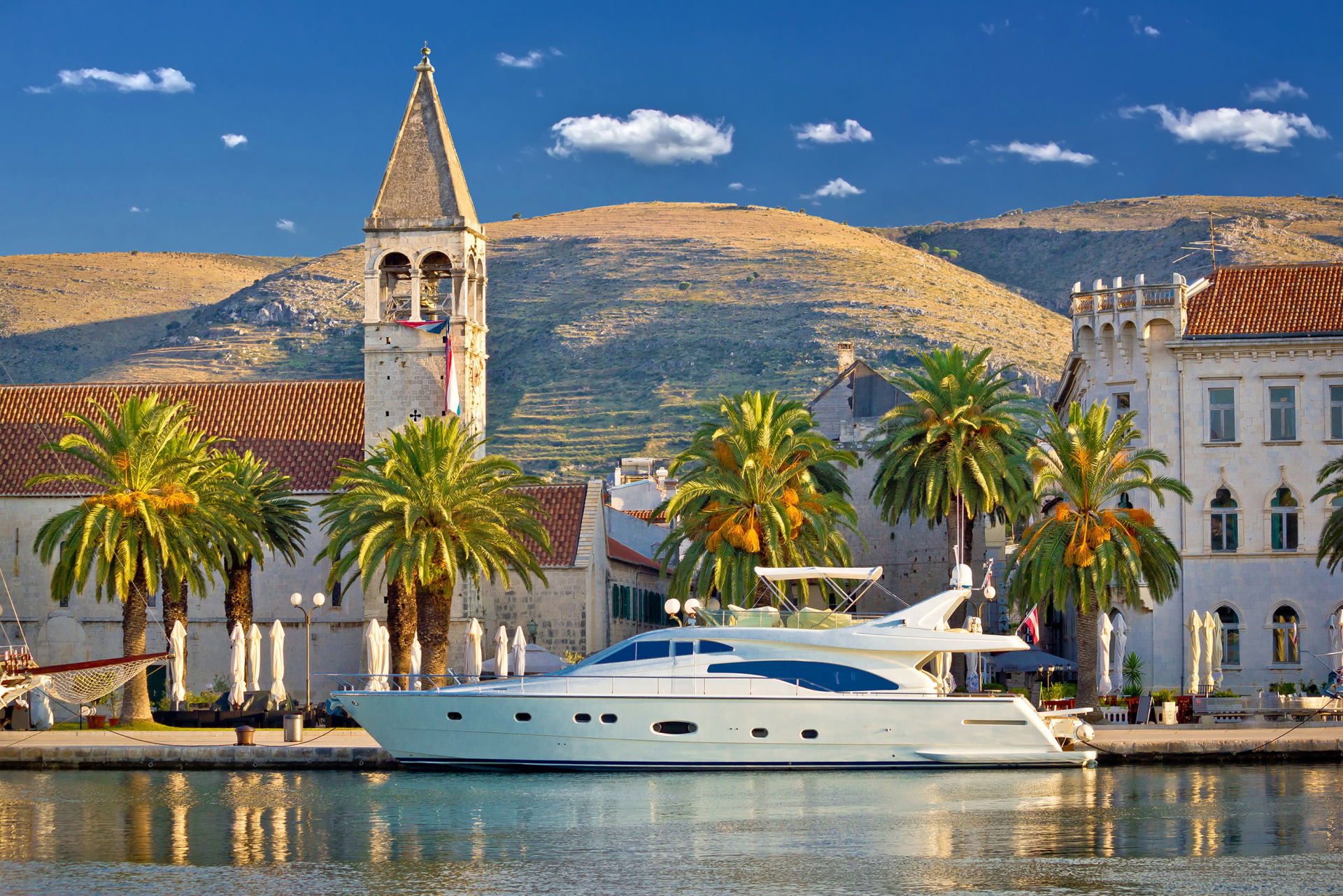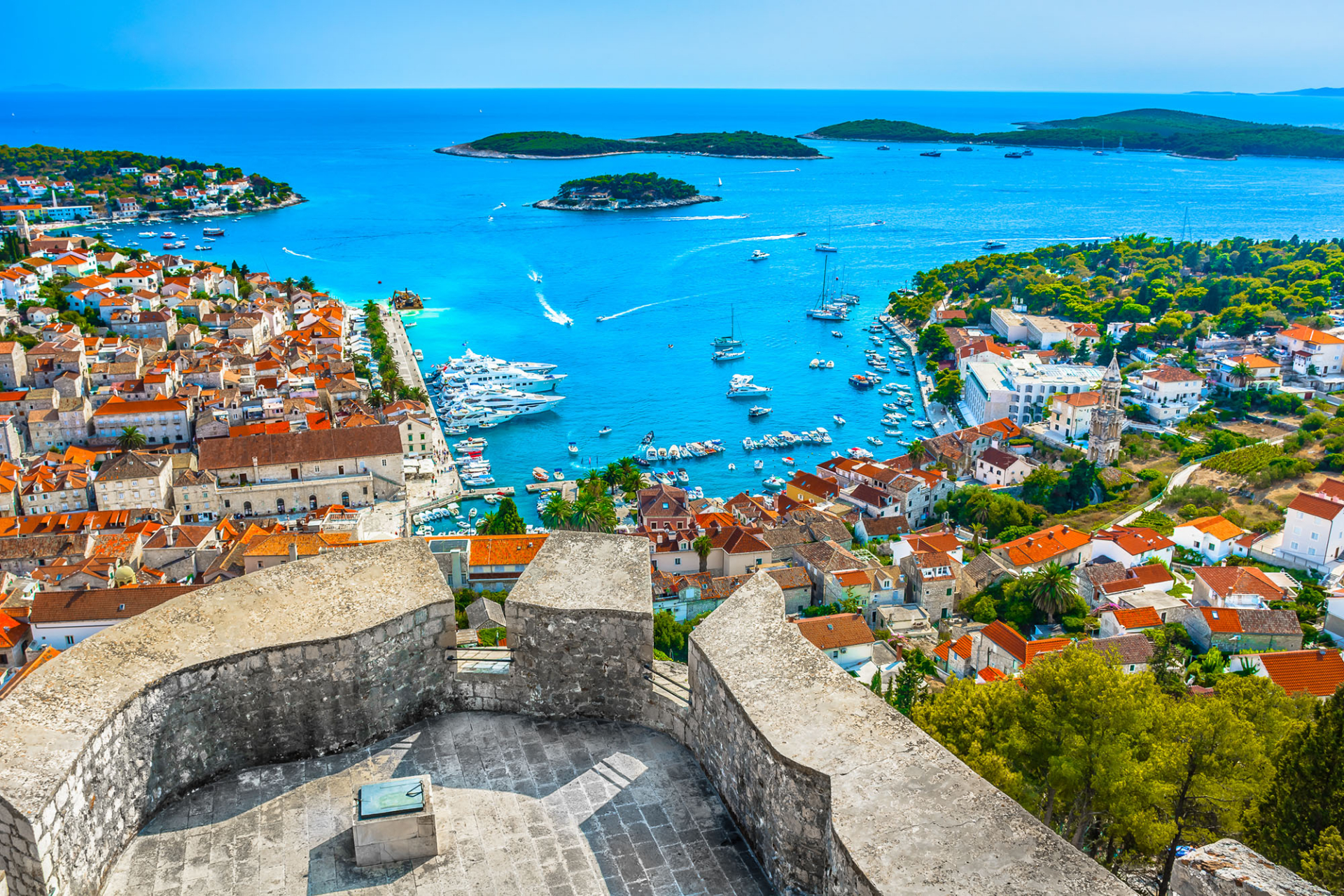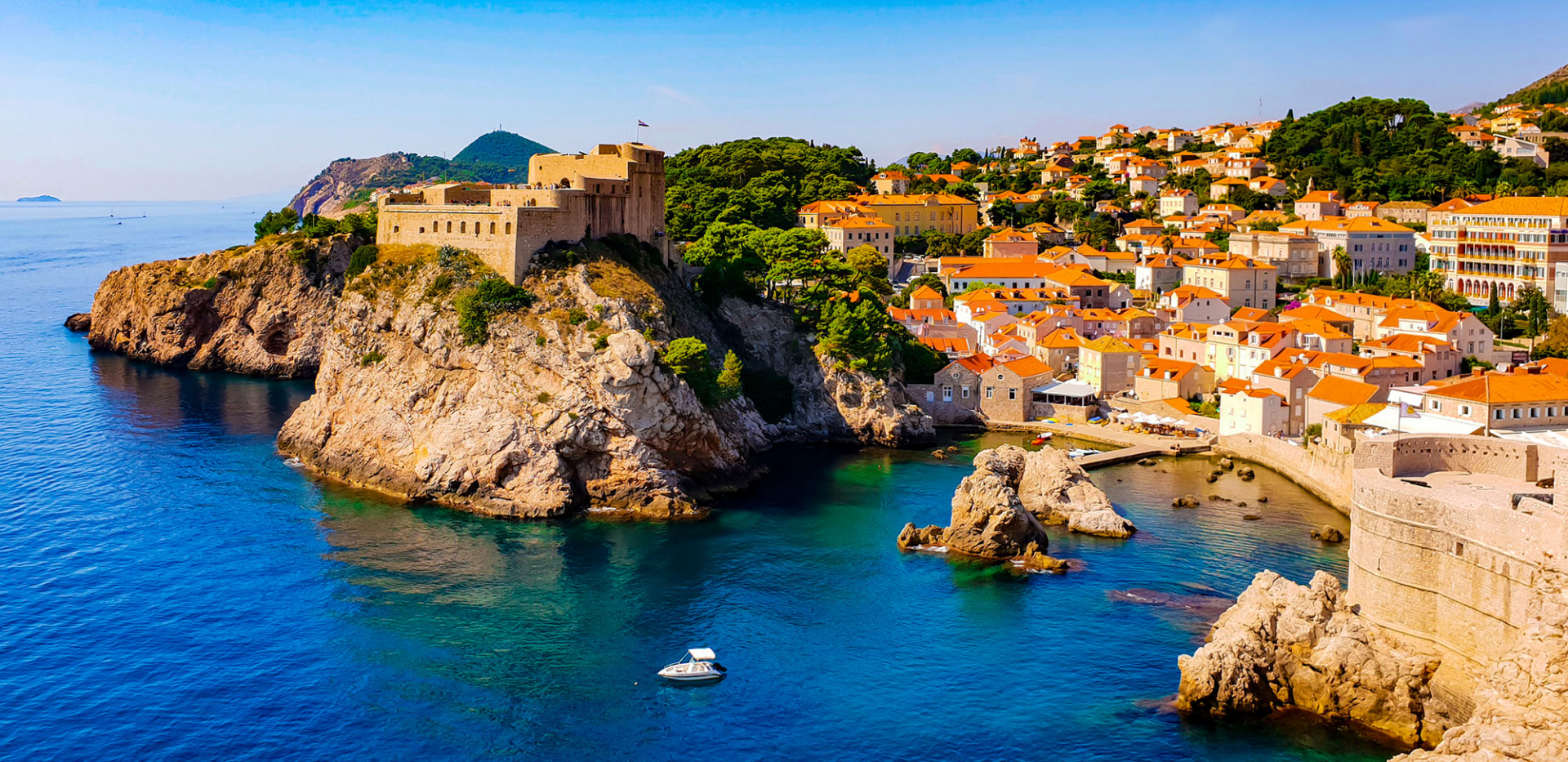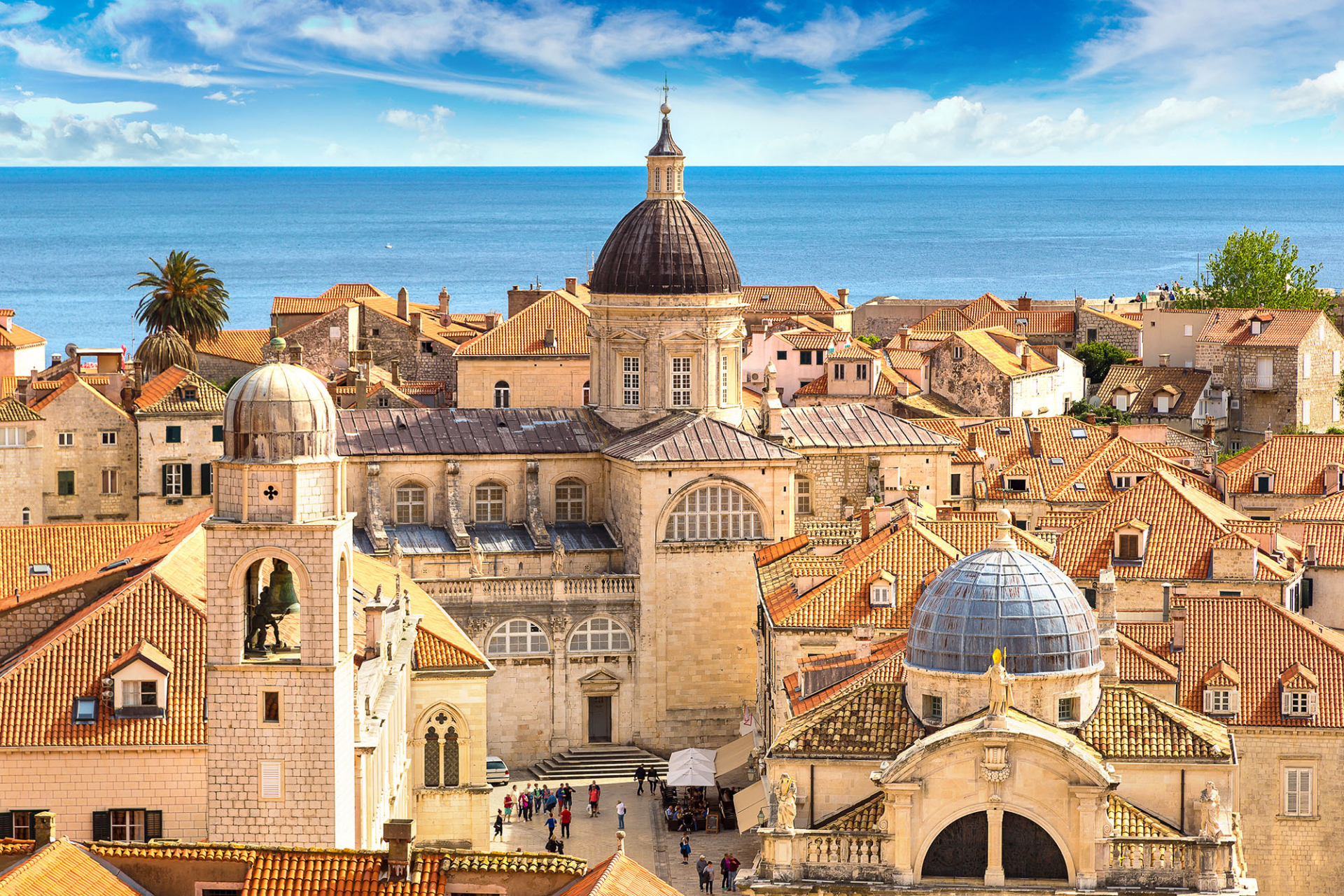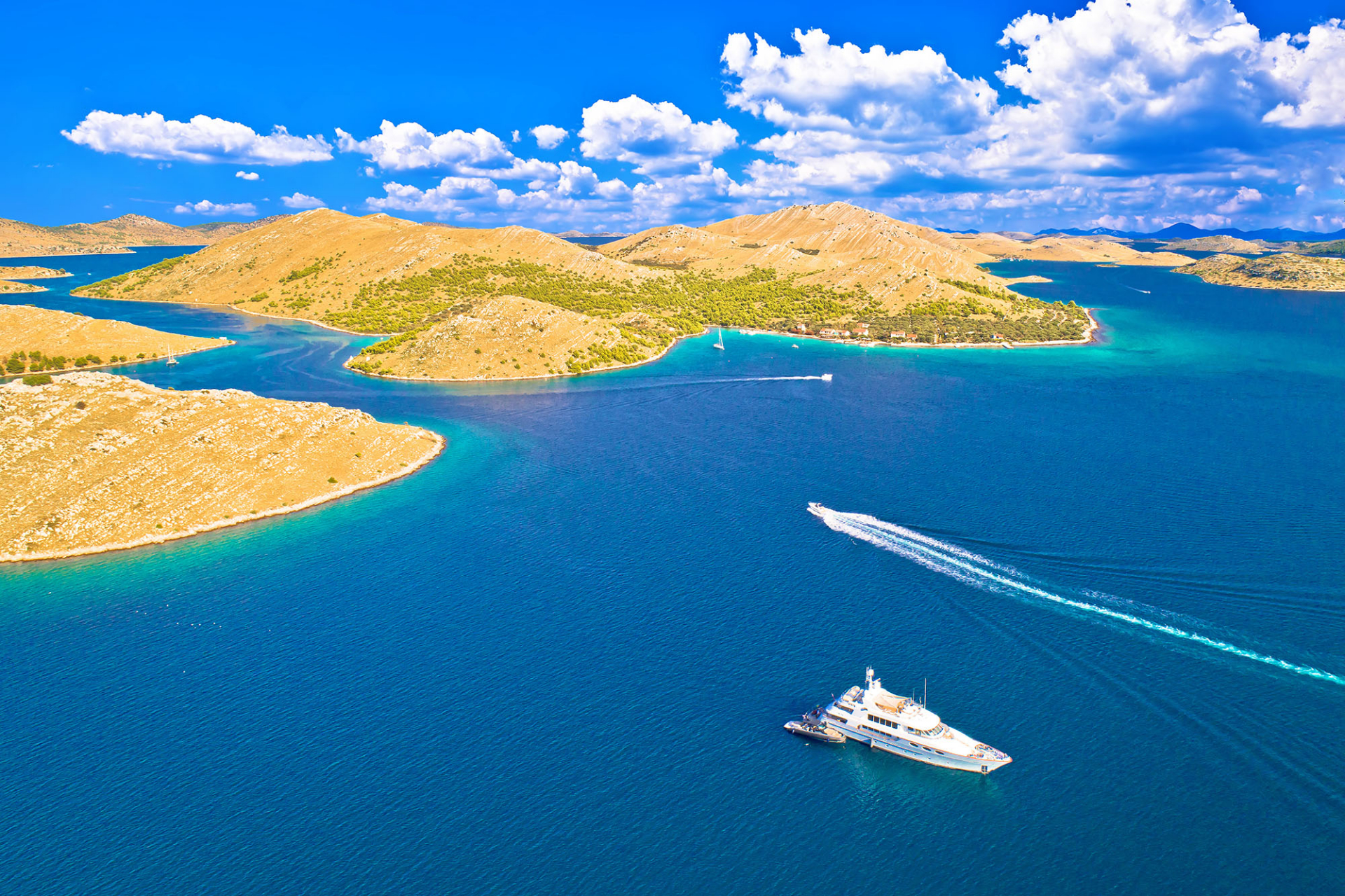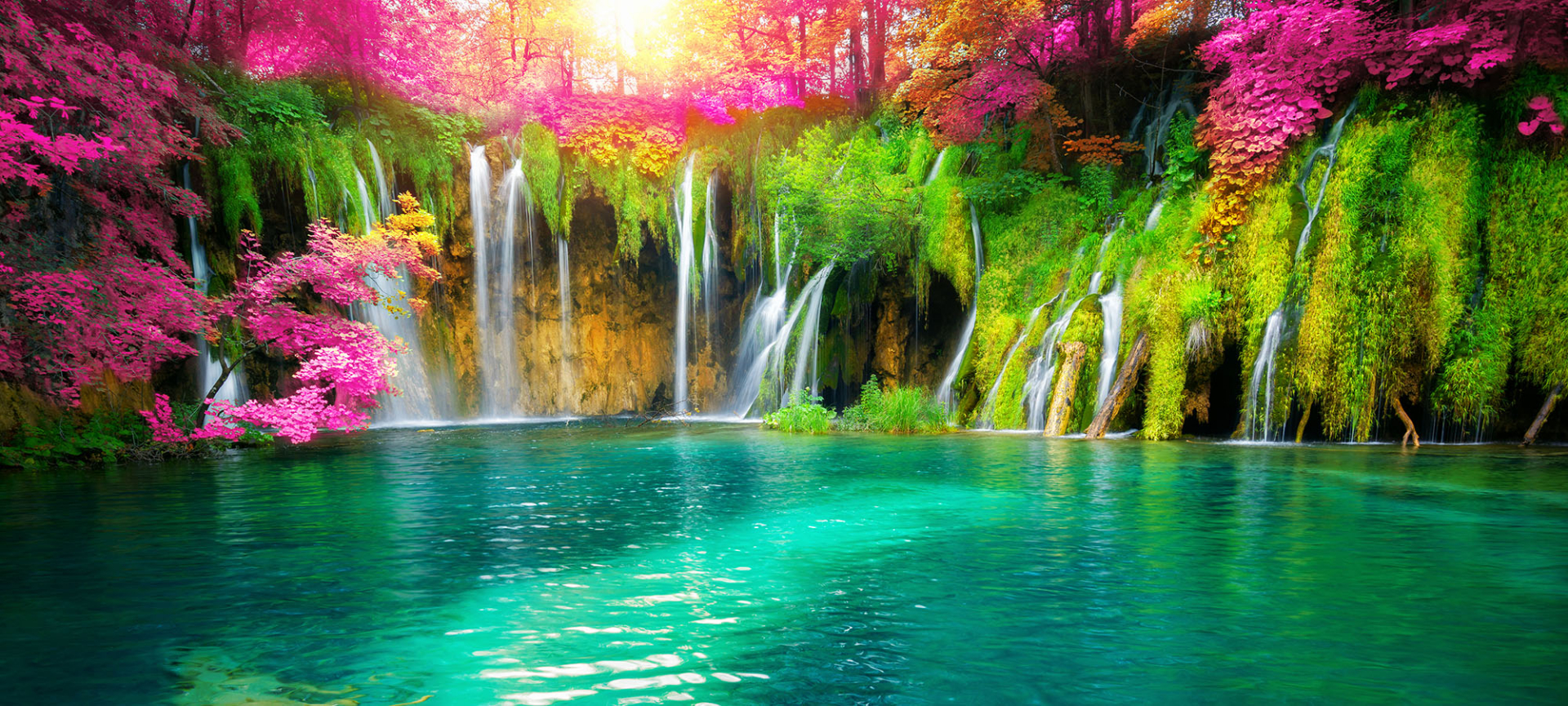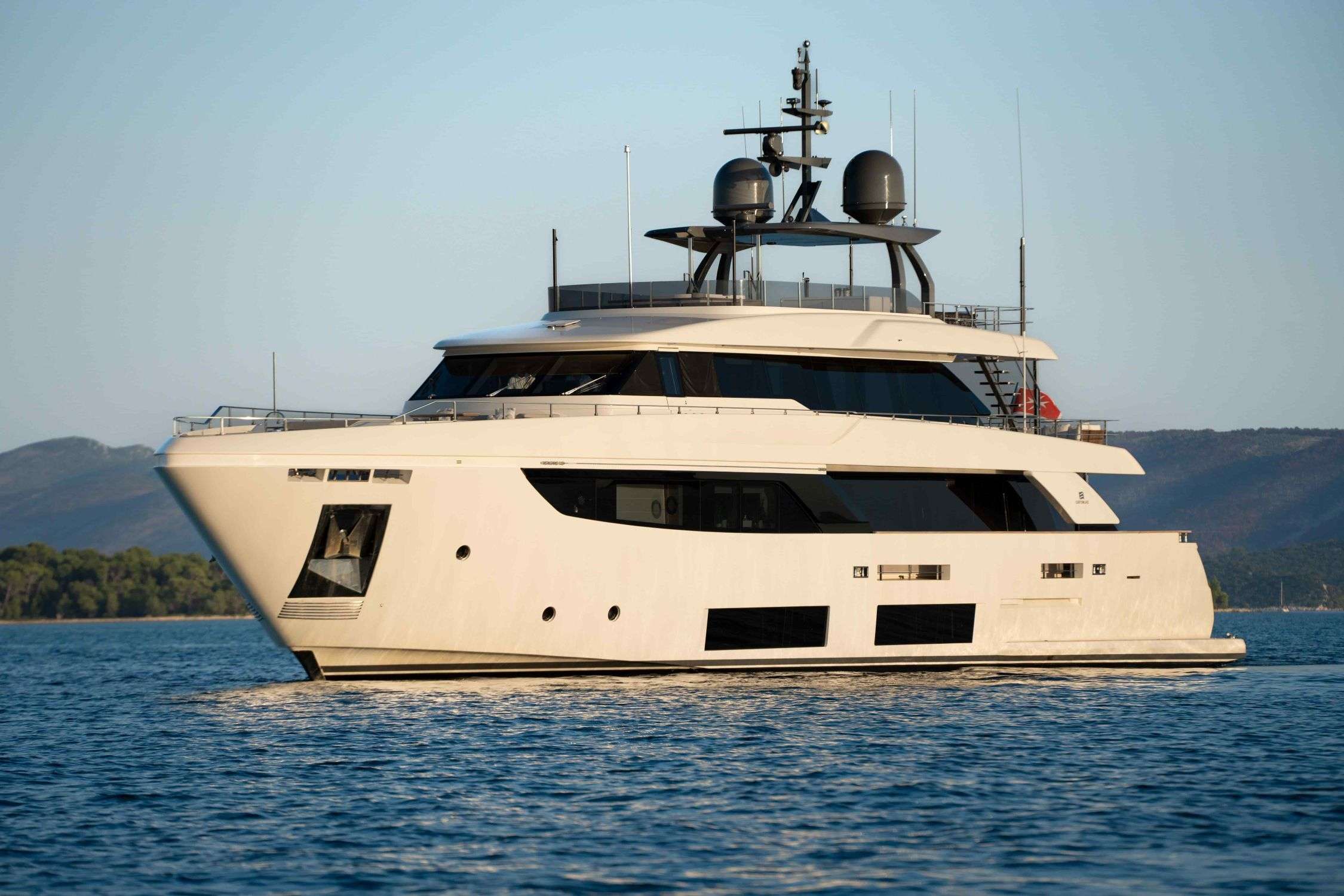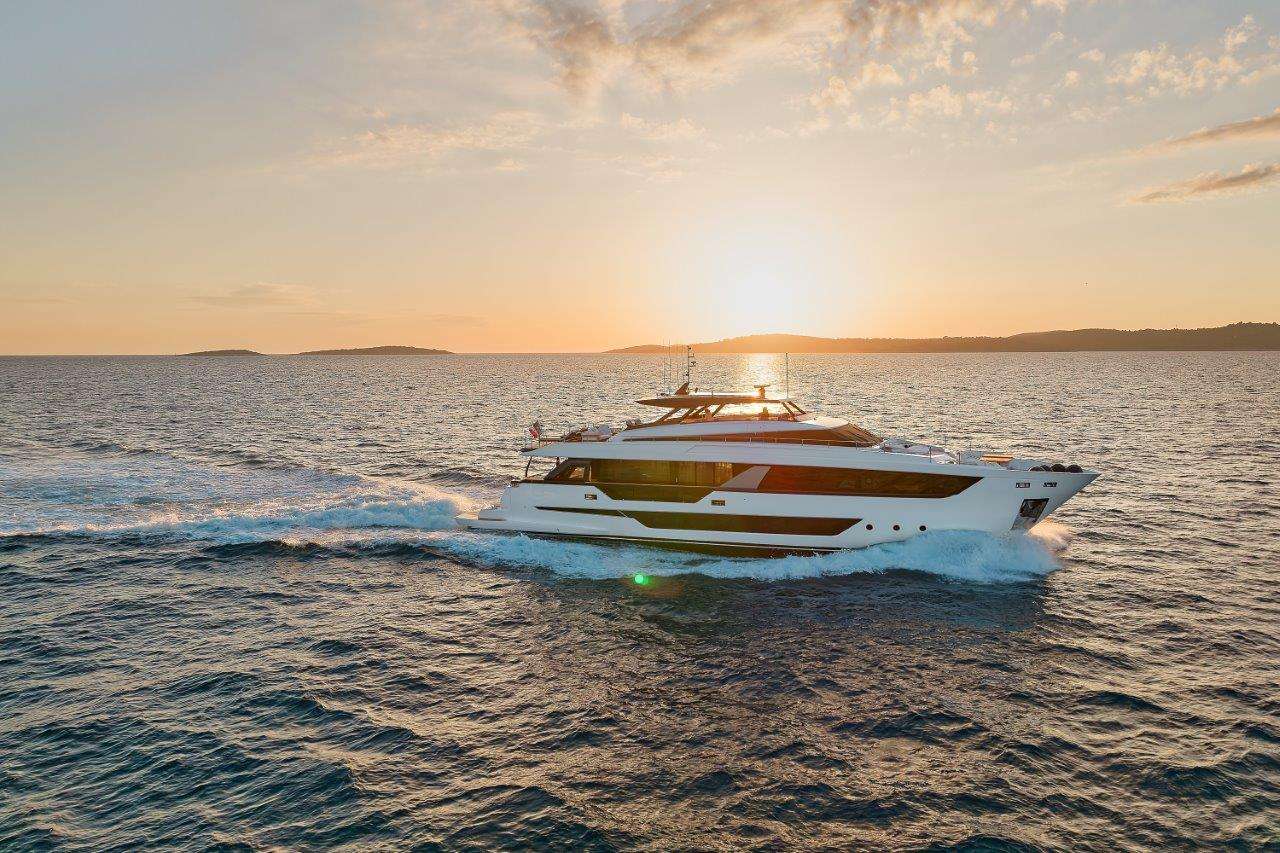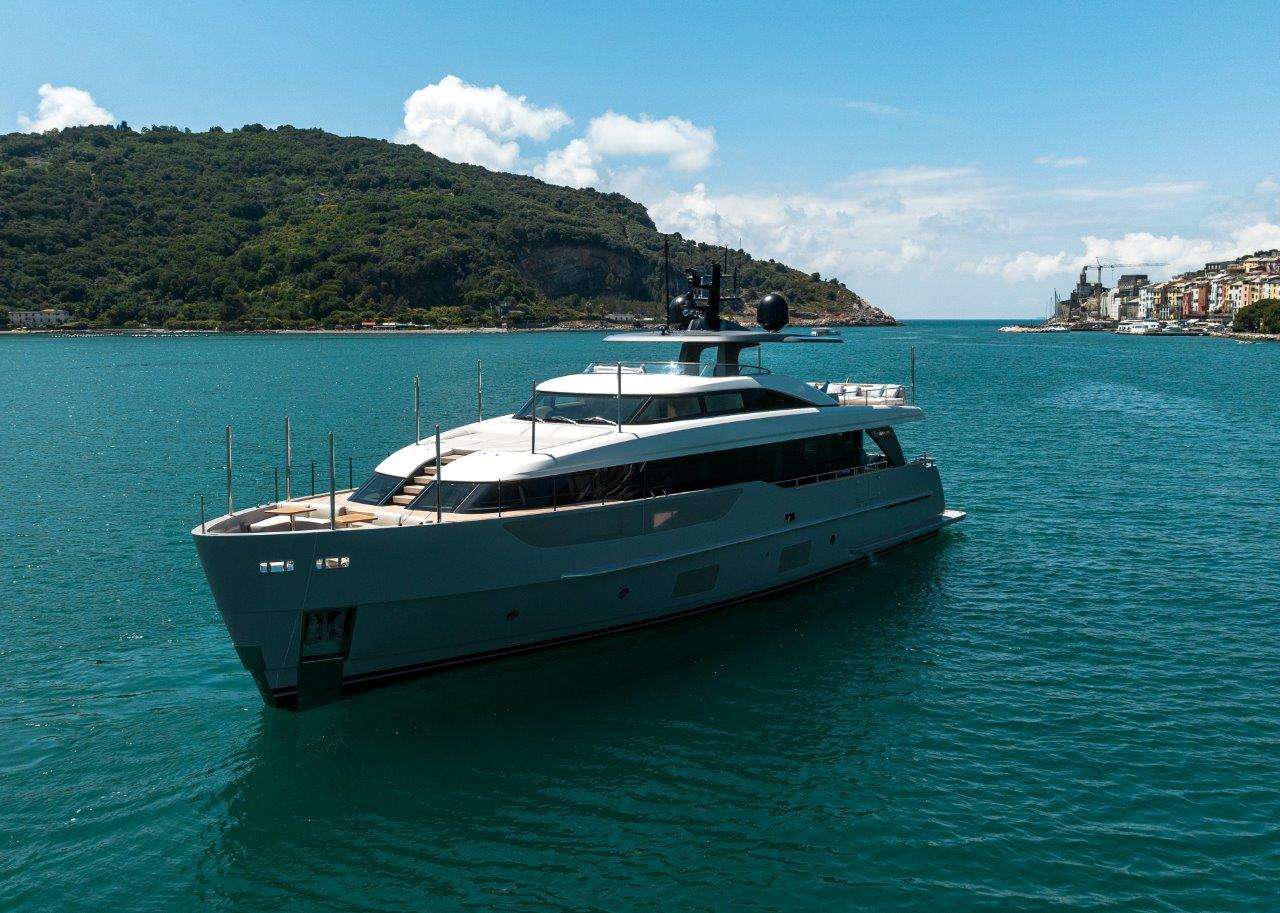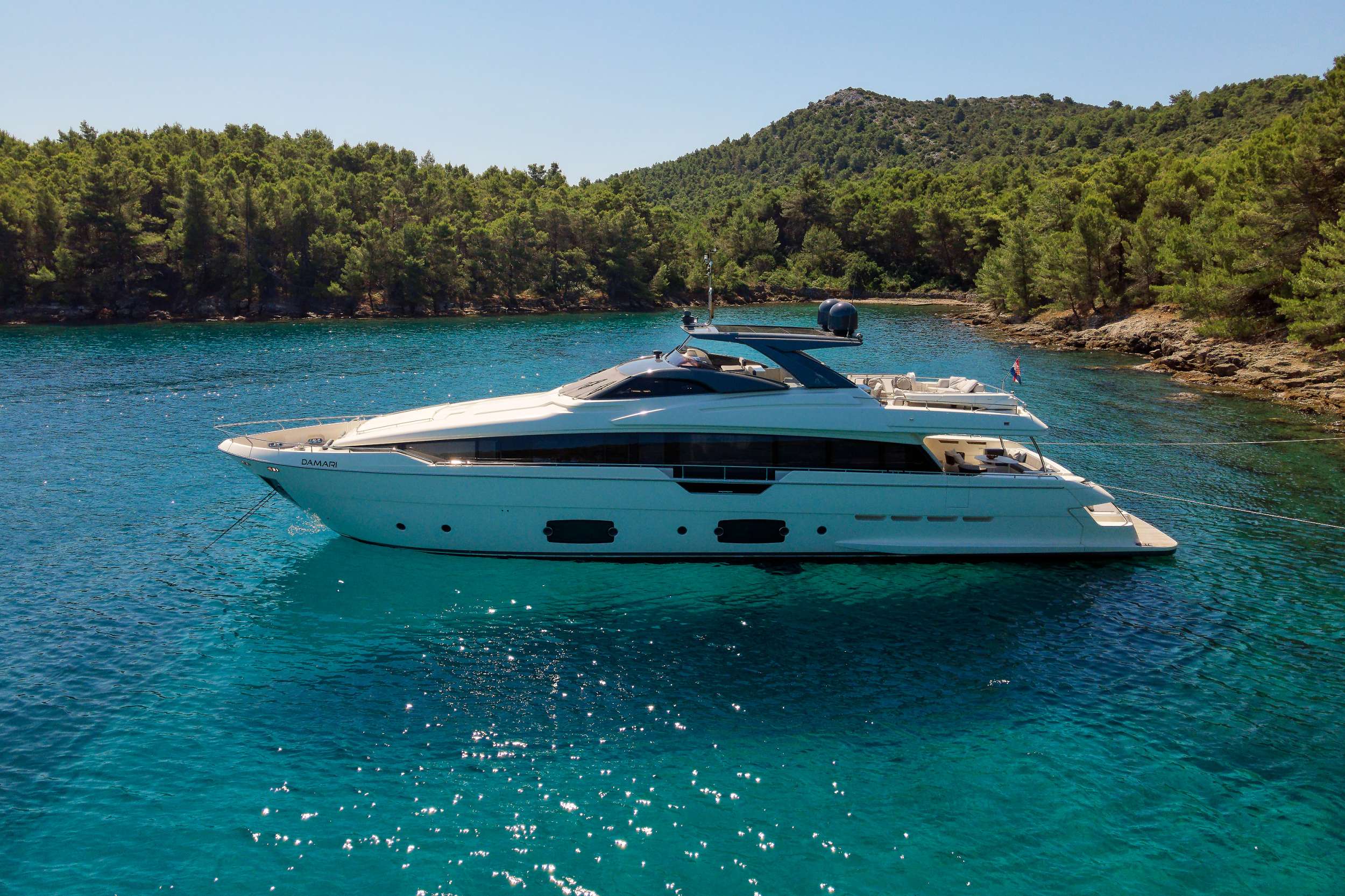Croatia Yacht Charter
Search Over 150 Yachts In Croatia For Your Luxury Charter Vacation!
Croatia is one of 12 Balkan Peninsula countries of Southern Europe that are defined by the four Balkan mountain ranges. The Dinaric mountain range runs along the Adriatic coastline, creating the dramatic landscapes of Croatia’s 1,100 miles of rugged coastline, dotted with charming, medieval coastal towns and villages, secluded coves, and beaches. More than 1000 unspoiled islands add another 2,480 miles of coast and magnificent beaches for an ideal island-hopping luxury yacht cruising itinerary! Croatia is a prized superyacht destination for its sheer natural beauty, away from the frenetic party scene of other Mediterranean destinations. With luxury accommodations the equivalent of a starred resort, a private yacht is the best way to immerse oneself in the luxury of just being in this historied country of 10 UNESCO World Heritage sites and cultural depth.
Croatia is 4th in the world with 15 UNESCO World’s Intangible Cultural Masterpieces. The Illyrian Movement of the 19th century was most influential on Croatia’s tremendous rise in arts and culture, though it is a blend of 4 spheres—Western Roman Empire, Byzantine Empire, Central Europe, and Mediterranean culture. Croatia is a highly literate country and Zagreb University, founded in 1669, is the oldest continuously active university in southeast Europe. The University of Zadar is the first university in Croatia; founded in 1396 and active until 1807, the university was reactivated in 2002.
Busiest passenger ports are Split and Zadar, while the Port of Rijeka is the busiest cargo seaport. Additionally, there are many minor ports for the ferry systems to the islands, coastal cities and to Italy, across the Adriatic Sea. The largest river port is Vucovar on the Danube—Croatia’s outlet to Europe’s transport corridor. As a boating community in the Adriatic has become more prevalent, numerous marinas have sprung up along Croatia’s extensive coastline to accommodate a variety of vessels with over 16,000 berths. Croatia is known worldwide for its unpolluted marine areas, 116 “Blue Flag” beaches (health, cleanliness, environmental management and more), and naturist (skinny dipping) beaches and resorts; it was the first European country to develop commercial naturist resorts. Many beaches are completely natural without facilities, while others are lined with cafes and bars, and more.
Some of the popular beaches are on a 37-mile stretch of Dalmatian coastline from Brela to Gradac known as the Makarska Riviera. Makarska is located below Mount Biokovo reserve. The Makarska Riviera features several beautiful pebble beaches in secluded coves, that are best accessed by boat (such as naturist Vrulja beach), along with popular family-friendly beaches like Makarska beach and Brela. Podrace beach in Brela is one of the most photographed; surrounded by pine trees and a boardwalk, crystal clear turquoise waters and rock formations. One of the most famous landmarks in Croatia is the iconic Brela Stone that is just offshore with pine trees growing out of it! Nearby Punta Rata beach is considered one of the world’s most beautiful beaches. Gornja Vala in Gradac is the largest beach on the Adriatic coast, located on the southernmost end of the Makarska Riviera. White pebble “naturist” Nugal beach is nearby for those preferring “no tan lines”!
It is accessed via a steep footpath through the forest down to the cove; best arrive by boat. As with most remote beaches, there are no facilities. Hvar and Brac are nearby island-hopping destinations. Pakleni Islands beaches and Hvar are only a short water taxi from the mainland or by boat. Beautiful, unspoiled beaches—Stipanska and Jerolim are “no tan line” naturist beaches. Palmižana is a “botanical wonderland.” Zlatni Rat on Brac island is Croatia’s most photogenic beach called “Golden Cape or Golden Horn” for the spit of fine shingle pebble beach that reaches into the Adriatic Sea—great for windsurfing and other watersports.
Copacabana Beach is a crescent of pebbly gravel on Seka Bay in Dubrovnik that features luxury loungers and deck chairs, watersports, paddleboarding and more. A beachside restaurant & bar offers cocktail table service to the sun loungers on the beach. Yachts anchored offshore are treated to a great sunset view of the city of Dubrovnik. Dubrovnik’s city walls are among the most spectacular in the world with an awesome view of the old town and Adriatic Sea from the top. The first walls were built in the 9th century and fortified in the mid-14th century when 15 square forts were added. The forts were made stronger and new ones were added in the 15th century to withstand and protect the city from Turkish invasion. Rajska Plaza (Paradise Beach), Lopar peninsula at the northern tip of Rab, is a long sandy beach with shallow water extending over half a mile offshore. Telascica Bay, Dugi Otok island on the Zadar archipelago is a designated nature park only accessible by boat. The nearly 5-mile-long bay has been an anchorage and shelter since ancient Roman times. Between the bay and sea is the brackish lake Mir fed by seawater seeping through underground cracks; the water temperature is 6 degrees warmer than surrounding sea, making it a natural spa for great swimming. Spiaza beach on Susak Island is the sandiest beach on a shallow bay. Bok bay is further east, around a rocky headland. There are no roads, cars or nightclubs on this peaceful island that is accessible by boat or ferry from the mainland.
Fully one-fifth of the nation’s economy is based on tourism. Opatija, in the northern coastal area, is Croatia’s first holiday resort. Developed in the mid-19th century, it became one of Europe’s prominent health resorts in the 1890s and is noted for the Hapsburg-era villas interspersed throughout this picturesque town. A lighted promenade winds along the shoreline providing great views of the Adriatic and the town with its mountainous backdrop. Located on the tip of the Istrian peninsula in the northwest, Pula features a 1st century Roman amphitheater that overlooks the harbor northeast of the old town. Designed and built for gladiatorial events and to seat 20,000 spectators, it continues to serve as an arena for concerts and film festival screenings. The amphitheater is the 6th largest of its kind in the world. A reenactment (Spectacvla Antiqva) in costume, like a Renaissance Fair joust, is held summer evenings. Split was once a Roman city on the Adriatic coast in the Dalmatian region. Located in the heart of Split, Roman Emperor Diocletian’s Palace is an ancient Roman limestone structure he had built for his retirement. This well-preserved ancient structure is neither palace nor museum, but a maze of narrow streets filled with bars, shops, restaurants, and people! The original structure built by slaves in 284AD – 305AD with massive limestone blocks that fit together without mortar, has been expanded over the millennia to its present-day configuration.
Each wall has a gate named for a metal (North-Golden, South-Bronze, East-Silver, West-Iron) with a straight east-west road separating the north and south areas. 220 buildings within the palace boundaries are home to about 3000 people. Some passageways and courtyards are deserted, while others are lively with music and activity from cafes and bars. Truly an amazing place to experience; stop by for appetizers and a glass of the fine Croatian wine. Also present in Split are examples of the more ornate Venetian and Medieval structures. The popular TV Series, Game of Thrones scenes were filmed in some of the narrow streets and passages under the Palace. The ancient remains of Diocletian’s baths still have some of the original mosaics intact. Diocletian chose Split as the site for his palace, not only for its coastal beauty, but also for its sulphureous water, known to be good for arthritis and gout. Interestingly, there are no flies in the local fish market, as sulfur from the water keeps the flies away! Don’t forget to rub the big toe of Gregory of Nin (Grgur Ninski) for luck as he stands guard near the shore on the north side of Diocletian’s Palace.
Hvar Island, located off the Dalmatian coast, lies between Brac, Vis and Korcula with ferry service to nearby Pakleni Islands, the archipelago off of Hvar. Accessible by ferry from the mainland or by boat, Hvar is a popular yacht destination in the summer months. Hula Hula beach becomes quite lively at night. The island is dotted with all kinds of little bars and restaurants, and beach clubs for daytime activities. The Blue Cave on one of the Pakleni islands, is an extraordinary wonder, glowing blue when sunlight hits the limestone through the water; only a tender will fit through its opening, same with Stiniva Beach in Vis with its narrow opening between two opposing cliffs. This hidden, stony gem of a beach topped Europe’s Best Beaches list in 2016. For visitors looking for a beach party, Zrce Beach, Island of Pag, is the place. World renowned for its legendary summer music festivals, sunset yacht parties, open-air nightclubs, and round-the-clock parties! Pag Island is also famous for its cheese and Pag cheese is a source label protected item for its unique flavor from the milk of Pag sheep. The sheep feed on mineral encrusted plants from the salty wind that blows over the hilly island. Great paired with Croatian Prosciutto, which differs from Italian in that the pork is smoked for about 48 days during the aging process, giving it a unique flavor.
Croatia’s National Parks are also legendary attractions. Not to be missed is UNESCO World Heritage Site, Plitvice Lakes National Park, an astounding fairytale forest with stunningly beautiful waterfalls spilling into a crystal blue lake. Nearby are the Caves of Barac near the village of Nova Krslja, Rakovica municipality. The caves first opened to visitors in 1892. After WWII, the upper caves of Barac were reopened to the public in 2004 with guided tours only. Both sites are about a 3-hour drive inland from Split. Krka National Park is also filled with exquisite waterfalls—some of the best in Europe and are only about a 1-hour drive from Split. There is also a ferry to the Park that departs from the golden gate in Split near the Gregory of Nin statue. Swimming is permitted in the lower pool of the falls; water shoes are recommended. Footbridges and raised wooden walkways make it easier to explore the Park’s wetlands. Croatian lavender grows in abundance here, with the second densest concentration of lavender in all of Europe. Some of the millstones of old windmills that had stood alongside the falls, have been preserved. Now, restaurants stand in the former mills’ sites for a great view of the falls while enjoying a Croatian coffee.
To experience the many layers of cultural influence, one must sample the excellent local Croatian cuisine, which is basically Mediterranean, heavily influenced by Italy and surrounding cultures (Austrian, Hungarian, Turkish) using simple, traditional methods (wood-fired grills, road-side spits, slow roasted under domed lids) but with regional variations. The 3 coastal regions are Dalmatia, Istria and Kvarner using fresh ingredients from the sea and local farms or forests—fish, shellfish, meat, vegetables, and pasta, almost always with olive oil. The oldest olive tree on the island of Brijuni was planted by the Romans about 1600 years ago, and still produces a harvest of olives! Croatian olive oils, especially from Istria region, are of internationally awarded quality. The Istrian EVOO (extra virgin olive oil) has a spicy, peppery flavor and scent like freshly mown grass and is produced by individual groves or small cooperatives with distinctly local character. This flavorful olive oil is drizzled on everything.
Winery tours are another great way to experience Croatia’s cultural history. Croatian winemaking dates back millennia—many varieties of grape producing fine reds, whites, and rosés—Zinfandel, Grk, and Grasivina are outstanding varieties. Prošek is a sweet Dalmatian dessert wine, like a port, produced in a similar method to the German Eiswein. Many vineyards are centuries old and family owned. During communist rule, volume was prioritized over quality and family vineyards were confiscated by the State to meet production goals, but now many boutique wineries have once again emerged after the communist government was defeated in 1991. The family owned Putalj Winery, located in the mountainous area outside of Split, is on family heritage property. This boutique winery produces Zinfandel wines. Zinfandel grapes are also grown in the USA for 100s of years and became known as the “American vine and wine” for its popularity. Interestingly DNA testing has confirmed the Zinfandel variety originated in Croatia, not Austria or Italy as previously thought. The two distinct wine producing regions in Croatia are the Slavonia region in the northeast, known for premium white wines, and on the north coast, Istrian and Kirk wines are similar to wines produced in Italy. Further south in Dalmatia region, Mediterranean style red wines are typical. Two Croatian wines were selected to be served at Joe Biden’s inauguration. The Pelješac wines—Benmosche Dingac and the Benmosche Zinfandel are produced by wineries owned by the former head of insurance giant, AIG, Benmosche, who purchased the vineyards after visiting Croatia aboard his superyacht and became enamored with the local Croatian wines.
Some of the uniquely Croatian dishes to sample for a taste of this ancient land and its cultural history, are Crni rižot—a black risotto made with squid/cuttlefish ink and is often mixed with cuttlefish chunks; Peka (ispod cripnje)—a popular meat and vegetable dish that is slow cooked under a domed terracotta or iron lid over burning embers. Boškarin—Istrian oxen are a delicacy and served at top restaurants and konobas (taverns) as carpaccio, with pasta or gnocchi in a savory sauce, as steak or salami, or as boškarin tail soup. Istrian ham is traditionally served as an appetizer; it is air-cured and aged for a year to 1.5 years and pairs well with regional cheeses. Buzarra is mussels in a wine broth with garlic and breadcrumbs, similar to French moule marinière. Truffles—Istria’s Motovun forests have some of the highest concentrations of truffles in the world. A Croatian truffle holds the Guiness World Record for the largest truffle at 2.6 lbs (1.2 kg)! Croatian tartufi have a more pronounced aroma than Italian truffles and are less expensive. Buzet is the City of Truffles; Toklarija, a family-owned restaurant offers fine dining in a 600-year-old converted olive mill. Truffles are used to flavor cream sauces over pasta like Fuži and Pljukanci or shaved on a salad.
Croatia’s long coastline, directly across from Italy, yields a wide range of seafood and shellfish for popular ingredients. Referred to as “Mediterranean sashimi”—raw fish is fileted tableside and drizzled with olive oil. Dmir & Ornella restaurant features “sea to plate” raw seafood. Oysters from the Limski Kanal are prized for their intense briny flavor. Ston, near Dubrovnik, is renowned for its oysters that are carefully farmed in the sea outside of this old town. Bluefin tuna are being “farmed” in large cages in the Adriatic Sea. Juvenile tuna fish are raised to large adult fish and most are sold to Japan, but some are also finding their way to Croatian dishes. Brodetto (Brudet) and Gregada are a “Catch of the Day” fisherman’s stew that originated in the Marche region of Italy and is made with a seasoned tomato base. Fritule are donut balls flavored with rum or rakija and raisins, lemon or orange zest, and egg yolks, that are deep fried and dusted with powdered sugar or dipped in chocolate. Originally a holiday treat, the popular Fritule are available year-round everywhere in Croatia.


